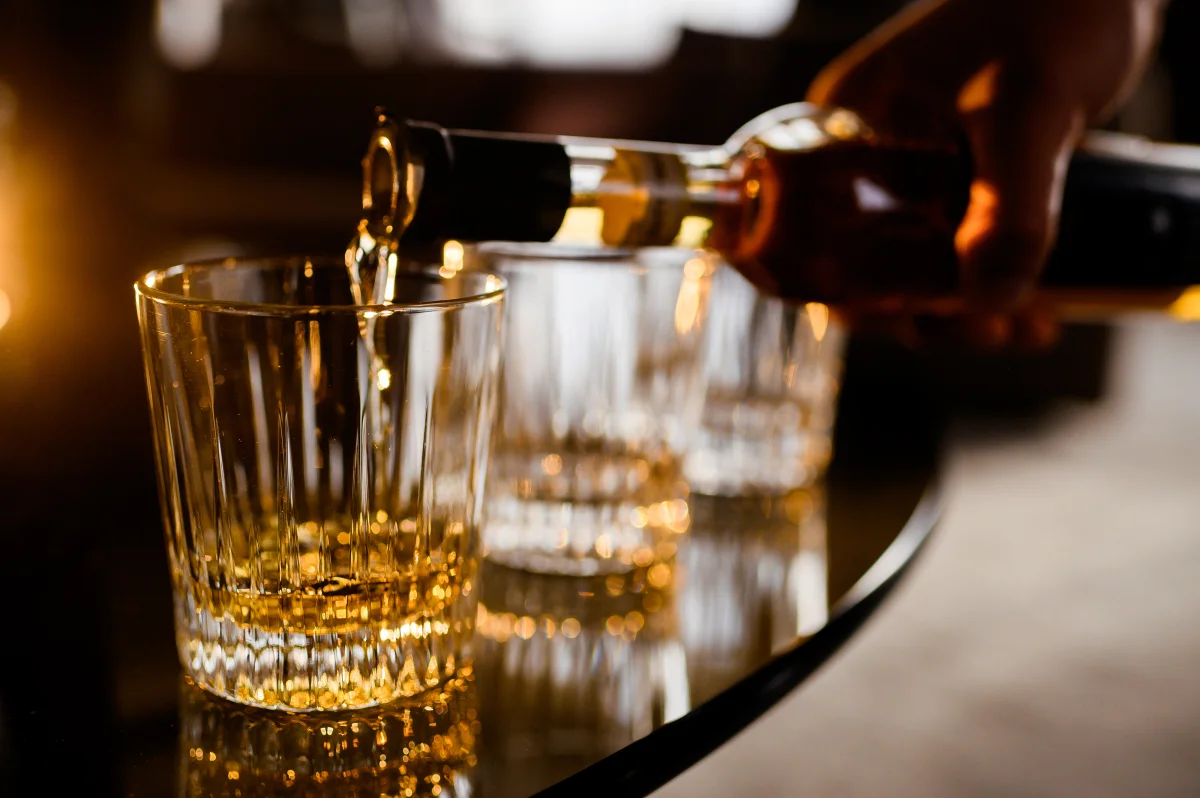The Ancient Roots: Distillation Arrives in England
The art of distillation likely arrived in England with Christian missionaries in the early medieval period. Monastery infirmaries became the centers of early spirit production, with monks distilling aqua vitae ("water of life") for medicinal purposes. These early spirits weren't the aged whisky we know today but rather raw distillates infused with herbs and spices.
By the 16th century, distillation had moved beyond monastery walls, with Henry VIII's dissolution of the monasteries inadvertently spreading distilling knowledge as displaced monks took their skills into the secular world. The first recorded mention of "whisky" (rather than aqua vitae) in England appears in 1494, though the distinction between various spirits remained blurry for centuries.
Early Commercial Production: The First English Whisky Boom
The late 18th and 19th centuries saw English whisky production flourish alongside the Industrial Revolution. Bristol became an early center, with its port facilitating both grain imports and spirit exports. The city's distilleries produced what contemporary accounts describe as a light, clean spirit—more akin to today's grain whisky than the robust single malts of Scotland.
Lea Valley in London emerged as another whisky powerhouse. The 1826-founded Lea Valley Distillery became England's largest whisky producer, employing innovative continuous distillation techniques newly developed by Aeneas Coffey. These column stills produced lighter, higher-alcohol spirits efficiently, making English whisky competitively priced against its Scottish counterparts.
By the 1880s, at least 28 commercial whisky distilleries operated across England, with particular concentrations in London, Liverpool, and Bristol. Victorian England had developed a genuine taste for its domestic whisky, with brands like Lea Valley's "Fine Old English" commanding premium prices and loyal followings.
The Catastrophic Decline: Why English Whisky Disappeared
The English whisky industry's collapse came with startling swiftness in the early 20th century, driven by several converging factors:
The Irish and Scottish marketing triumph cannot be underestimated. Their aggressive promotion of "authentic" whisky as exclusively Celtic persuaded consumers that English whisky was somehow inferior or inauthentic—despite England's centuries of production.
Changing consumer preferences shifted toward lighter drinks like gin and imported wine, particularly among the middle and upper classes who had been English whisky's core market.
The devastating impact of World War I redirected grain toward food production and saw many distillery workers conscripted. Unlike their Scottish counterparts, English distilleries never fully recovered.
Prohibition in America closed a crucial export market, particularly damaging the London distilleries that had invested heavily in American distribution.
By 1905, only four English whisky distilleries remained operational. The Lea Valley Distillery, once England's proudest whisky producer, closed in 1918. The final blow came when Liverpool's last distillery shuttered in 1921.
For the next 82 years, English whisky ceased to exist as a commercial product.
The English Whisky Wilderness Years: 1921-2003
During this long silence, England's whisky heritage faded from public memory. While Scotland's distilleries became tourist attractions celebrating their traditions, England's former distillery buildings were repurposed or demolished, their stories forgotten. Generations of English drinkers grew up with the notion that whisky was inherently and exclusively Scottish.
A few dedicated historians maintained interest in England's lost whisky tradition. Alfred Barnard's seminal 1887 work "The Whisky Distilleries of the United Kingdom" preserved valuable descriptions of England's Victorian distilleries, becoming an inadvertent time capsule of a vanished industry.
Occasionally, bottles of pre-1921 English whisky surfaced at auctions, commanding extraordinary prices more for their rarity than their contents. A 1909 bottle of Lea Valley Special Reserve sold for £2,600 at Sotheby's in 1989—an astronomical sum for the time.
The Renaissance Begins: St. George's Leads the Way
England's whisky drought finally broke in 2003, when a Norfolk farmer named James Nelstrop announced his intention to establish England's first whisky distillery in over eight decades. After navigating Byzantine licensing laws that had never contemplated an English whisky producer, St. George's Distillery began production in 2006.
Nelstrop's vision was not to recreate historical English styles but rather to produce a high-quality single malt in the Scottish tradition. The distillery's Norfolk location offered ideal conditions: locally grown barley, pure water from the Breckland aquifer, and a climate that many experts consider perfect for whisky maturation—cool enough for slow aging but with sufficient seasonal variation to encourage barrel interaction.
In December 2009, the first bottles of "The English Whisky Co." (St. George's consumer brand) reached legal whisky age and went on sale, marking English whisky's official resurrection after 88 years of absence.
The New Wave: England's Craft Whisky Explosion
St. George's pioneering success inspired others. The English Whisky Renaissance gained momentum through the 2010s, mirroring the craft spirits boom happening globally but with a distinctly English character emphasizing innovation and terroir.
The Lakes Distillery opened in Cumbria in 2014, leveraging the Lake District's pristine water and tourism appeal. The Cotswolds Distillery followed the same year, focusing on local ingredients and becoming the first full-scale distillery in that picturesque region.
London, once home to numerous whisky distilleries, rejoined the scene when The London Distillery Company began whisky production in 2015, followed by Bimber in 2016 and East London Liquor Company in 2018.
By 2025, England hosts over twenty active whisky distilleries, with more in planning. Unlike Scotland's industry with its centuries of tradition, English producers enjoy the freedom of innovation without prescription. Many embrace experimental approaches to mashing, fermentation, and maturation that might raise eyebrows in more traditional settings.
Defining the New English Style: What Makes English Whisky Unique?
Today's English whisky producers have embraced their industry's unusual position—rooted in historical precedent yet unburdened by rigid tradition. This freedom has fostered distinctive characteristics in the new wave of English whiskies:
Terroir-focused production sees distilleries like Dartmoor Whisky using local microflora for fermentation, while Circumstance Distillery in Bristol experiments with wild yeasts captured from the city air.
Agricultural integration is common, with operations like Cooper King in Yorkshire and Priory Farm in Devon operating on a field-to-glass model where they grow their own grains.
Diverse cask programs push beyond traditional bourbon and sherry wood. The Oxford Artisan Distillery matures whisky in native English oak, while Spirit of Yorkshire explores Japanese mizunara casks.
Transparency in production has become an English whisky hallmark, with detailed information about barley varieties, yeast strains, and exact maturation conditions freely shared—a level of disclosure rare in more established whisky regions.
Conclusion: England's Whisky Future
English whisky's revival represents more than just a new entry in the global spirits market—it's the reclamation of a lost heritage and the birth of a distinctly modern approach to an ancient craft. Today's producers acknowledge their historical predecessors while embracing contemporary craft spirits philosophy.
As England's new distilleries move beyond their initial releases into mature expressions, the coming decade will reveal whether "English whisky" emerges as a recognized style with its own distinctive character, or remains a geographic designation encompassing diverse approaches. Either outcome represents a remarkable revival for a tradition once thought permanently lost to history.
The patient whisky enthusiast might consider setting aside a bottle from this renaissance period—in another century, it may be as coveted as those rare Lea Valley bottles from English whisky's first heyday.

